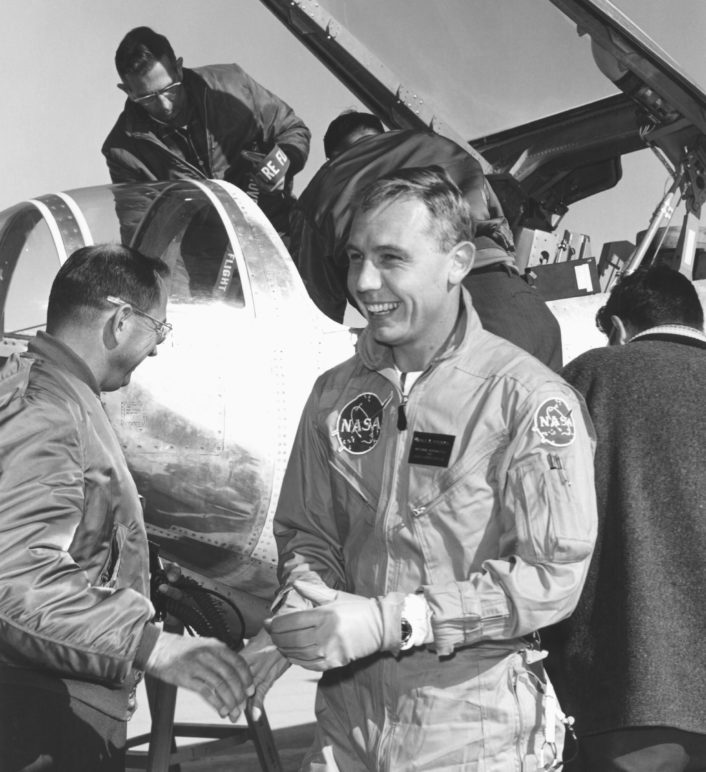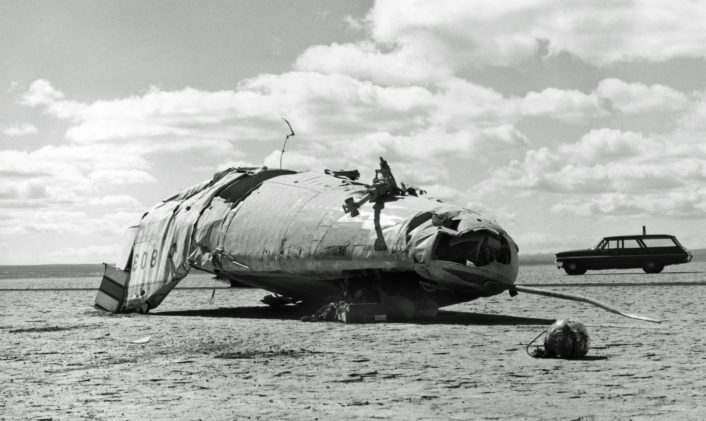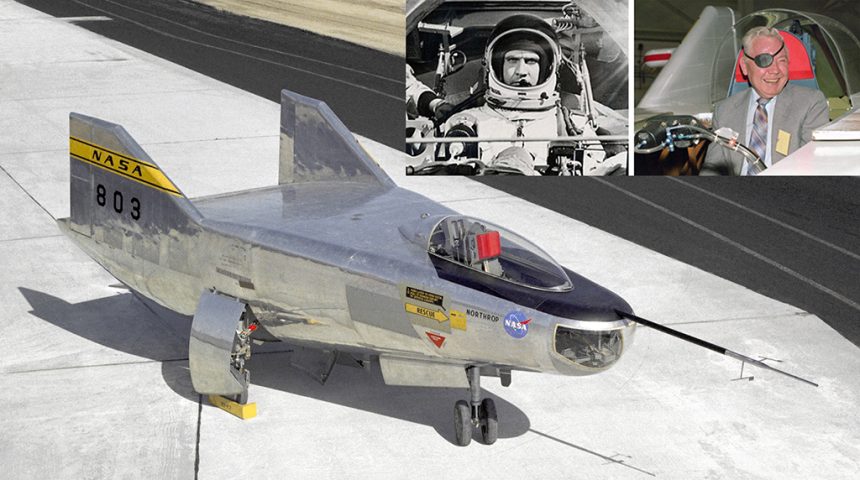The Crash of the Northrop M2-F2 Lifting Body and “rebuilding” of Steve Austin, the “Six Million Dollar Man”.
If you’re my age you remember a great prime time TV show called “The Six Million Dollar Man”. It followed the exploits of fictional test pilot Steve Austin (Lee Majors) after his “reconstruction” from a real-life crash in the then-experimental Northrop M2-F2 Lifting Body aircraft, a precursor to the space shuttle program. The intro also includes brief film clips of the similar HL-10 aircraft under the B-52 launch aircraft. The TV series was conceived by noted aviation author Martin Caidin, and ran from 1973 until 1978. It also spun-off a female counterpart TV series, character Jaime Sommers (Lindsay Wagner), as the rather fetching, “Bionic Woman”.
The real pilot of the Northrop M2-F2 Lifting Body during the dreadful crash landing on May 10, 1967 seen at the beginning of “The Six Million Dollar Man”, was NASA test pilot Bruce Peterson.

The real “Steve Austin”, test pilot Bruce Peterson, was born in 1933 and was from Washburn, North Dakota. Peterson joined the U.S. Marine Corps in 1954 through the naval cadet program and became a 2nd lieutenant. He went on to accumulate an extensive academic engineering background from the University of California (UCLA) and California Polytechnic State University. During his academic career at UCLA, Peterson also worked as an aircraft assembler for Douglas Aircraft Company. Peterson earned a Bachelor of Science degree in Aeronautical Engineering from Cal Poly in 1960.
In August, 1060, Peterson joined NASA’s flight test program as an engineer at the Dryden Flight Test Center. In 1962, he graduated from the prestigious Air Force Test Pilot School at Edwards Air Force Base in California and transferred to flight testing.
Although he went on to a remarkably successful flight test career, early-on it would seem as though Bruce Peterson’s real-life career as a test pilot was somehow jinxed. In his first flight of the experimental powered hang-glider aircraft called the “Rogallo paraglider research vehicle” or “Parasev”, on March 14, 1962, Peterson crashed from an altitude of 10 feet. The crash was not serious and, following the incident, Peterson was quoted as asking, “What happened to the lateral stick forces?”.
After his rough start, Peterson had a long run of flight test successes in a remarkable assortment of aircraft. He flew the F5D-1 test aircraft, a prototype of the Douglas F4D Skyray, the North American F-100 Super Sabre (the Air Force’s first supersonic fighter), the famous Lockheed F-104 Starfighter, the General Dynamics F-111 swing-wing bomber, the Boeing B-52 bomber and several others.
But it was his 16th test flight on May 10, 1967 in the Northrop M2-F2 that solidified Peterson’s place in pop culture history. Peterson was attempting a landing in the M2-F2 when the aircraft entered a series of side-to-side oscillations seen in the famous film of his crash.

In the intro to “The Six Million Dollar Man”, pilot Steve Austin is heard to say, “I’ve got a blowout, damper three!” Austin goes on to say in the script, “Pitch is out. I Can’t hold altitude. Correction, alpha hold is off. Trim selectors- emergency!” And then the final famous line, “Flight Com, I can’t hold it! She’s breaking up! She’s breaking…”
In real life, test pilot Peterson says just prior to the crash, “Boy, there’s some glitches…” “Get that chopper out of the way!” “That chopper’s gonna get me I’m afraid!” Peterson was concerned about the proximity of a helicopter during his landing approach and, when he entered a series of oscillations in the essentially wing-less lifting body, the aircraft became uncontrollable. After impact, the M2-F2 rolled violently six times, the dramatic visual seen in the video. The rest is a matter of aviation, and television, history.
Peterson sustained serious injuries from the crash including the eventual loss of vision in his right eye from a staph infection, but it did not stop him from continuing his successful flight test career. Even without six million dollars’ worth of bionics, Peterson went on to fly nearly 6,000 total flight hours in 70 different aircraft. He was an early flight test engineer on fly-by-wire advanced flight control systems and went on to work for Northrop on the B-2 Spirit stealth bomber program. Bruce Peterson died after a long illness on May 1, 2006 at 72.
Incidentally, adjusted to an annual historic inflation rate of 3.90%, rebuilt test pilot Steve Austin would cost considerably more now, since $6,000,000.00 in 1973 is equal to $36,278,682.35 in 2020 according to Google.








